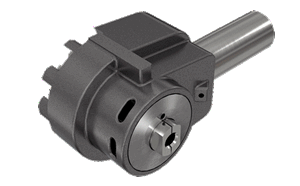How to Keep Your End Mills Sharp
With the complex grinds and unique applications in the moldmaking industry, end mills are a key component of production and there are a few different ways to keep them sharp.
In most cases, manufacturing a mold is a process of material removal, which makes cutting tools the workhorses of any moldmaking operation. Drills and end mills are in constant use, making them dull quickly. The life of cutting tools is especially short in mold manufacturing due to the hardness materials that are manipulated. Since sharp tools are critical in mold manufacturing, here are a few options to consider for keeping end mills sharp and production running.
One option is buying new. To put it simply, once an end mill is no longer sharp, it is discarded and a new tool replaces it in the moldmaking process. For the long term, this can be the most expensive method as new tools—particularly carbide—can be pricey.
In examining cost, if 20 end mills at $15.00 each need to be purchased on a monthly basis, that’s $300 every month. If volume is high, this would not be the most cost-effective method to keep tools sharp. However, small shops with very low volume find this to be justifiable.
Another option is sending cutting tools to a sharpening service. There are many of these third-party services throughout the USA and they are often equipped with high-end industrial machinery. Some are local-based businesses while others provide a nationwide service.
For cost analysis purposes, assume that the average price to have a two flute end mill sharpened is $5.00 (fees vary depending on the sharpening service). If 20 dull end mills need to be sharpened every 30 days, that’s $100 per month spent for re-sharpening tools. However, these calculations do not acknowledge other influencing factors—namely shipping charges, the need for additional inventory and machine downtime. Often shops that utilize third-party sharpening services are trading other resources or have low volume.
Yet another option is bringing a tool sharpener in-house for on-the-spot drill and end mill sharpening. There are a variety of tool grinders on the market ranging from complicated equipment to user-friendly machines. The upfront investment for an in-house end mill sharpener will be more expensive initially; yet, one of these sharpeners can quickly begin paying for itself.
For example, if the purchase of an end mill sharpener costs around $3,000 and 20 dull end mills need to be sharpened monthly, the ROI will occur in less than a year if buying new. If a facility is sending drills to a sharpening service, the in-house sharpener will likely begin paying for itself in fewer than 8 months if shipping, additional inventory and machine downtime are accounted for. The benefits of tool sharpening on-site include limited machine downtime, no transit times, customizable sharpening and no extra inventory needed.
Different applications have different sharpening needs and moldmaking is no exception. Whether it’s buying new, sending to a sharpening service, or bringing the sharpening equipment in-house, the need for sharp tools is prevalent in mold manufacturing. It’s crucial for mold shops to consider the effects of how they care for their tools and which method is the most cost-effective for their operations.
Related Content
3D Printing Enables Better Coolant Delivery in Milling Operations
Just like 3D printing enabled conformal cooling channels in molds, additive manufacturing is now being used to optimize coolant delivery in cutting tools.
Read More6 Ways to Optimize High-Feed Milling
High-feed milling can significantly outweigh potential reliability challenges. Consider these six strategies in order to make high-feed milling successful for your business.
Read MoreHow to Optimize Mold Finishing
Circle segment technology requires fewer tool paths, improving surface quality and increasing cutting tool life.
Read MoreHow to Overcome Deep-Hole Drilling Obstacles in Mold Machining
Keep up with the newest tooling innovations to overcome holemaking and finishing challenges.
Read MoreRead Next
How To Choose the Correct Coating for Your Cutting Tools
As if choosing the right cutting tool for certain jobs wasn't difficult enough, choosing the right coating for that tool can be just as imporatant. These tips can make that decision easier.
Read MoreHow to Use Strategic Planning Tools, Data to Manage the Human Side of Business
Q&A with Marion Wells, MMT EAB member and founder of Human Asset Management.
Read MoreHow to Use Continuing Education to Remain Competitive in Moldmaking
Continued training helps moldmakers make tooling decisions and properly use the latest cutting tool to efficiently machine high-quality molds.
Read More








.png;maxWidth=300;quality=90)









